
This post is about the mushrooms and slime molds that have appeared recently. Warm, humid weather is ideal for their growth and I’ve learned that about two days after a heavy rain is the best time to look for them in this area. I don’t know or care about the science behind this; I’m just speaking from experience. The more mushrooms you find and try to identify the more you will learn about them. When I see a mushroom with a pea size, pleated cap for instance, I think of pinwheels and parachutes. Once I know this I need to know if it grows on decomposing leaves or on decomposing wood, as these did. If I’m lucky I might come up with a name like the leaf parachute mushroom (Marasmius epiphyllus) shown here, but I don’t get too hung up on names of things these days. I just enjoy the beauty and wonder of it all.

Fungi can take you on some incredible journeys, and you don’t have to eat them to experience it. This photo is of one I’ve never seen before and luckily it was very easy to identify as the Asian beauty fungus (Radulodon copelandii.) It is thought to be an invasive fungus native to Asia which was first documented in this country 10 years ago in Massachusetts. It is a toothed crust fungus with long, flat teeth which can be white, yellowish, or the tan color seen here. It likes to grow on hardwood logs, sprouting out of the furrows in the bark.

I found it growing on an oak log from a tree cut a few years ago and the above shot shows it on the butt end of the log, looking like a fungal waterfall.

Cinnamon fairy Stools (Coltricia cinnamomea) are also called tiger eye mushrooms. They get their common name from the concentric bands of cinnamon brown coloring on their one inch diameter caps. They are a tough, leathery polypore which, if picked when fresh, will hold their color and shape for a long time. They usually grow very close to the ground, just high enough for a fairy to sit on, but as I was putting this post together I saw some growing out of a tree stump, with their short stalks parallel to the ground.

I believe this mushroom I found growing on a decomposing pine log is a common rustgill. The cap is kind of orange red and has scales, and is darker in the center.

Common rustgill fungi (Gymnopilus penetrans) have gills that are crowded and rusty orange. Though in this shot the gills don’t appear to attach to the stem (stipe) they attach at about hallway up their width. To get this shot I put my camera under the cap and clicked the shutter, and I was surprised to see so much light coming through what appeared to be a dense cap. Mushrooms almost always come with surprises.

I was walking down a hillside trail that I had walked up a few minutes earlier when I saw these ebony cup (Pseudoplectania nigrella) fungi growing in the moss. I had missed them on the way up but I don’t know how because they were easily seen against the moss. The maple leaves in the foreground should give you a good idea of their size.

Cup fungi are in the sac fungi family and usually have a shiny side and a dull, matte finish side. The shiny side is where the spores are produced and I was reading how, if you blow gently on the shiny side of an ebony cup it would suddenly shoot many thousands of spores up into the air. I’ve never tried this but I can say that inhaling mushroom spores isn’t wise, so I’d be holding my breath after I blew on one. Mushroom spores love to land on warm, moist, dark places to get their start and the interior of a human lung sounds like it would be a perfect spot. The inside of the cup is the shiny surface of these fungi but this one didn’t have much of a shine so it might have already released its spores.

These pinwheel mushrooms (Marasmius rotula) had just started growing when I found them. They were young enough to be nearly see through and so tiny all of what you see in this group would have easily fit into an acorn cap with room to spare. I was amazed that my camera was able to get a photo of something so tiny with detail that I had never seen before.

Not all small white mushrooms with pleated caps belong to the Marasmius family. The dripping Bonnet (Mycena rorida) is one of those that doesn’t. It is also called the slippery mycena because the lower half of its stem is very slimy. It appears fairly unremarkable until you learn that it is bioluminescent, which means that it emits an eerie green glow in the dark, much like the light of a firefly. It is one of many species responsible for the glowing lights seen in a nighttime forest, called foxfire or fairy fire.

One of the most common slime molds is the scrambled egg slime (Fuligo septica,) which likes to grow on wood chips, rotting logs, and sometimes even lumber. When it is spotted it is usually bright yellow as it is in the photo above, and many people’s first encounter with it is when they find it growing on their garden mulch. It is unusual among slime molds because it can grow in full sunlight. Fuligo septica produces the largest spore-producing structure of any known slime mold; some of them can be quite big and spread over a large enough area to scare people who don’t know slime molds. “What is this stuff growing in my mulch?” is a question most people in the gardening business have heard.
I recently met a woman in the woods who seemed interested in what I was doing so I started explaining slime molds to her. She wrinkled her nose and said “ugh,” as soon as she heard “slime molds.” I explained that they weren’t slimy or moldy; it was just a name that really didn’t apply. Finally she said “It’s very strange to know these things,” and walked off down the trail. I had to laugh; maybe she was right.

I’m seeing insect egg slime mold (Leocarpus fragilis) quite frequently, always growing on fallen branches, twigs, and even tree bases. As can be seen in this photo each tiny, yellow or orange pill shaped structures (sporangia) hangs from a kind of stalk. Before this stage the slime mold was a mass of plasmodium slowly moving over the forest floor, searching for yeasts, bacteria and whatever else it could feed on. When the plasmodium has run out of food it will form into separate sporangia, as can be seen here. From this stage the sporangia will turn brown and harden and start to crack open before releasing their spores to the wind. Each of the tiny sporangia seen here would measure less than the diameter of the head of a common pin. The green stick like object is a white pine needle, which might help with scale.

One of the most common slime molds is the wolf’s milk slime, which is always found growing on wood in groups and which always looks like tiny pink or brown puffballs. When young they have a pink or orange liquid inside which over time becomes the consistency of toothpaste. As this “paste” ages it dries and becomes the slime mold’s spores. When the outer shell is torn or stepped on they are released to the wind.

Red raspberry slime mold (Tubifera ferruginosa) is another slime mold that can take full sun; it was sunny, very humid, and close to 90 degrees when I found it growing on an old stump. Most slime molds would immediately dry up and fade away in full sun but this one looked pristine. It gets its name from not only its color but also from the way it will grow bumpy as it ages and resemble a raspberry. This one was quite young.

I’ve gotten a few photos of eyelash fungi over the years but this time I wanted to get a closer look at the tiny hairs that give them their name. Bright red eyelash fungi (Scutellinia scutellata) are in the cup fungus family and are edged with hairs can that move and curl in towards the center of the disc shaped body. For that reason it is also called Molly eye-winker. I’ve never been able to find out what the hairs do or why they are there, even from the Mushroom expert web site, so it’s another mushroom mystery. I’ve always found the tiny, pea size fungi in deep shade on saturated twigs or very wet tree wounds but I’ve read that they can also grow on wet soil along streams. They’re cup shaped when young but flatten as they age. I’ve never found more than four or five in a group but I’ve seen photos of large numbers growing together. On this day the flat, pea size example shown was the only one I saw.

The brittle cinder fungus (Kretzschmaria deusta) is striking in gray and white. I always find it growing vertically on standing wood; here it was growing on an old beech stump. It not only changes color but shape over time. In fact by the time it is ready to release its spores you would never guess it had once looked as beautiful as this.

Here is the brittle cinder fungus again in a previous photo, aged to what looks like a lump of coal. It has lost most of its beauty but it is ready to do what it must. It has a hard, shiny shell that will crack open and release thousands of tiny dark spores to the wind. The shell always reminds me of that liquid chocolate you pour on ice cream, which makes a thin shell. Maybe next year I’ll find it at its most beautiful once again.

Fly agaric mushrooms (Amanita muscaria) can be as big as a dinner plate. This one’s “patches” are white as is the stem, and its cap is often chrome yellow as can be seen here. It is a close relative of the red and white European fly agaric that most are familiar with, and it has much the same hallucinogenic properties. The “fly” part of the common name comes from the way pieces of the fungus were put in a plate of milk. When flies drank the milk they would die. It is said that this mushroom also has the ability to “turn off fear” in humans. Vikings are said to have used it for that very reason, and those who used it were called “berserkers.”

Slugs have appeared as I was sure they would with all the rain, and they love certain mushrooms. Sometimes it can be hard to find a mushroom to photograph that they haven’t already found.

The mushroom called yellow patches (Amanita flavoconia) is related to the fly agaric we just saw but it is less than half the size. The tissue hanging from it is part of the universal veil that covered it completely when it was young. The mushroom tore through it as it grew and it was shredded into pieces, some of which remain as yellow patches on the cap. You’ll note that these patches were white on the fly agaric, and so was the stem. It can be easy to confuse the two because the stem on yellow patches can sometimes be white; I’ve done so a few times. If the mushroom is small and lemon yellow with yellow patches on the cap it is most likely this one.

So, would you eat this? I didn’t think so. Mycologists often label mushrooms like this one LBMs, which stands for “little brown mushrooms,” and since they can all more or less look alike and be a real pain to identify, the LBMs get dumped into a too hard basket; left for another day. But I saw so many of these in this one area this year I thought I’d give them a try. If I’ve done the job correctly I think it’s a mushroom called the deadly web cap (Cortinarius colymbadinus.) They’re in the same family as pretty purple corts, which should be showing themselves any time now. Cortinarius is a large family of mushrooms and many of them will make you sick. Some can kill, so the advice from mushroom people is to not eat any of them.

The coral fungi have started to appear and one of the first I’ve seen is this one, which I think this might be Clavaria ornatipes. It is described as spatulate, which means flat and wide like a spatula. They shrivel when they dry out and revive after a rain. They grow directly out of the ground and there are often hundreds of them. Books don’t have a lot to say about this one so I’m not sure it has a common name.

We’ve seen some tiny mushrooms in this post but here is one of the biggest that I know of; Berkley’s polypore. The young one in this photo was already nearing a foot in length and it’s common to find them three feet in diameter.

Here is the same fungal cluster that is in the previous photo. In just 6 days it had doubled in size and with all the rain, it will most likely keep growing until it is king of the fungal forest. Once it has stopped growing it will release its spores and slowly decompose until finally its stench will be able to be detected from several yards away. Although these giants can look as if they’re sitting on the ground they do have a short, thick stalk. This mushroom should not be confused with the edible chicken of the woods which is usually bright orange red. It can also sometimes be more yellow than red and as you break off pieces of it you’ll notice that they have yellow undersides and tiny round pores.

Here is a chicken of the woods for comparison; I found it one a few years ago and it was quite big, but not as big as a Berkley’s polypore. It was also very colorful, like a giant flower, but the color can vary and it will fade with age. I’ve been able to watch two of them age and one, which got a lot of sunlight, faded to stark white. The other was shaded and it kept some color until it finally rotted away. I’ve heard that these mushrooms can get as big as a Berkley’s polypore but I’ve never seen one get that big. Size isn’t all of it though; there are many differences between the two, and if you scroll up and down between this one and the Berkley’s polypore in the previous shot you’ll see that the differences are obvious.
Though I love flowers there are many other things as beautiful and in my opinion mushrooms are one of those. Due to drought it has been about two years I think, since I was last able to do a mushroom post. We certainly aren’t seeing drought this year so I hope to be able to do one or two more. I do hope you enjoy them.
Live this life in wonder, in wonder of the beauty, the magic, the true magnificence that surrounds you. It is all so beautiful, so wonderful. Let yourself wonder. ~Avina Celeste
Thanks for coming by.










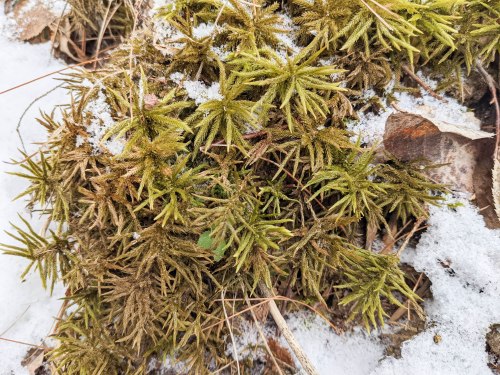
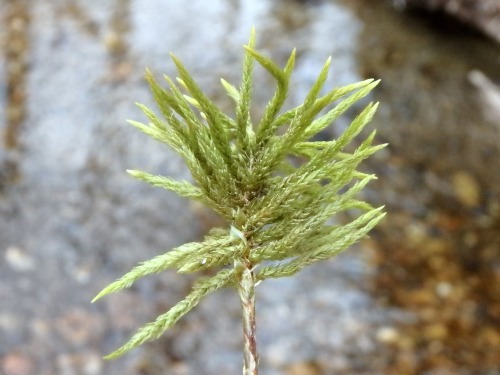










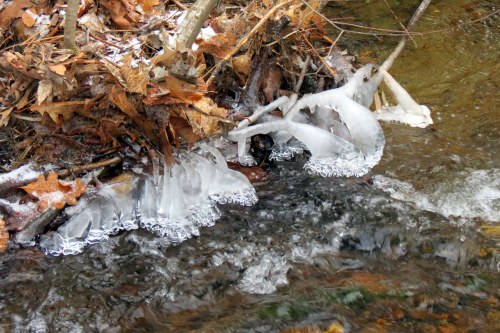








































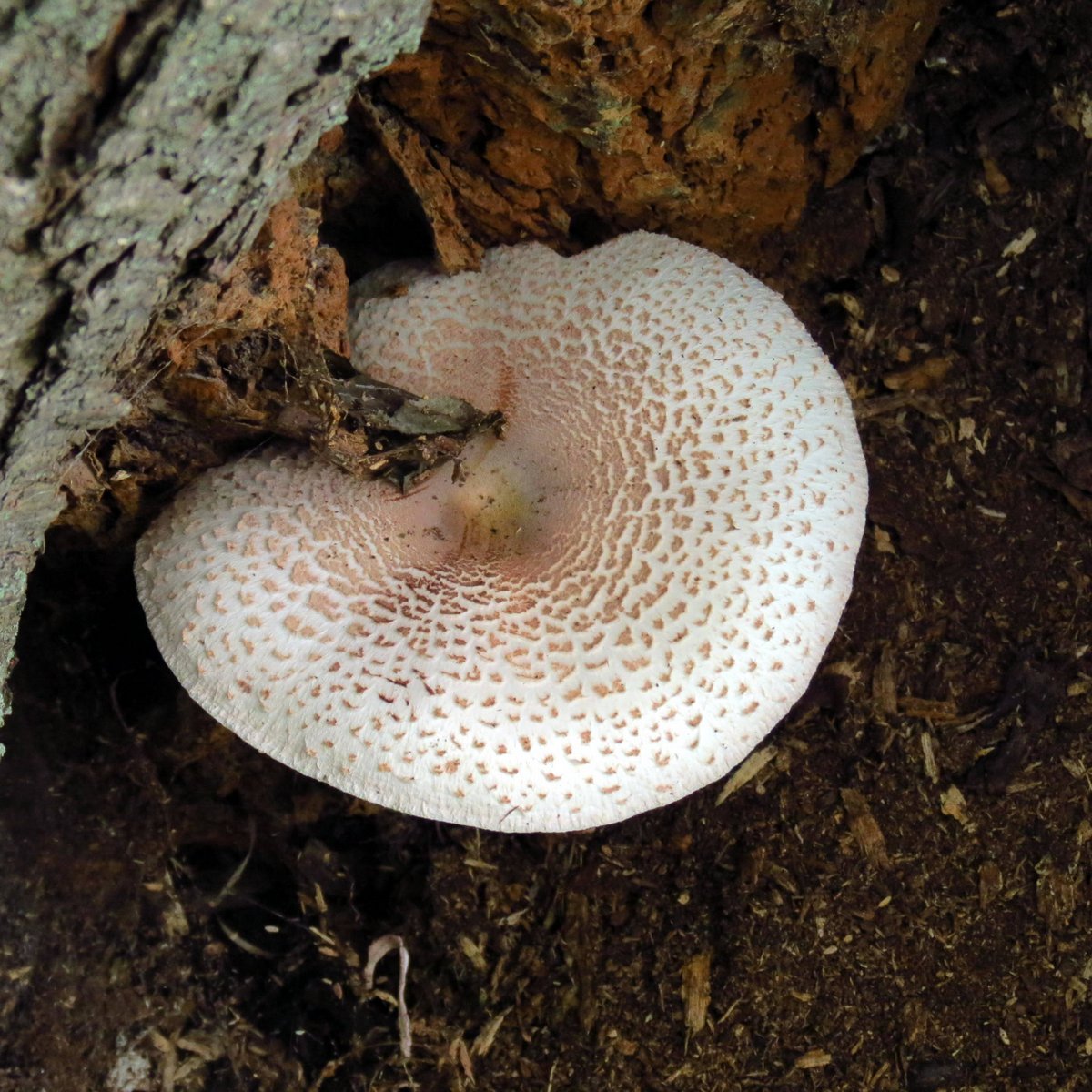












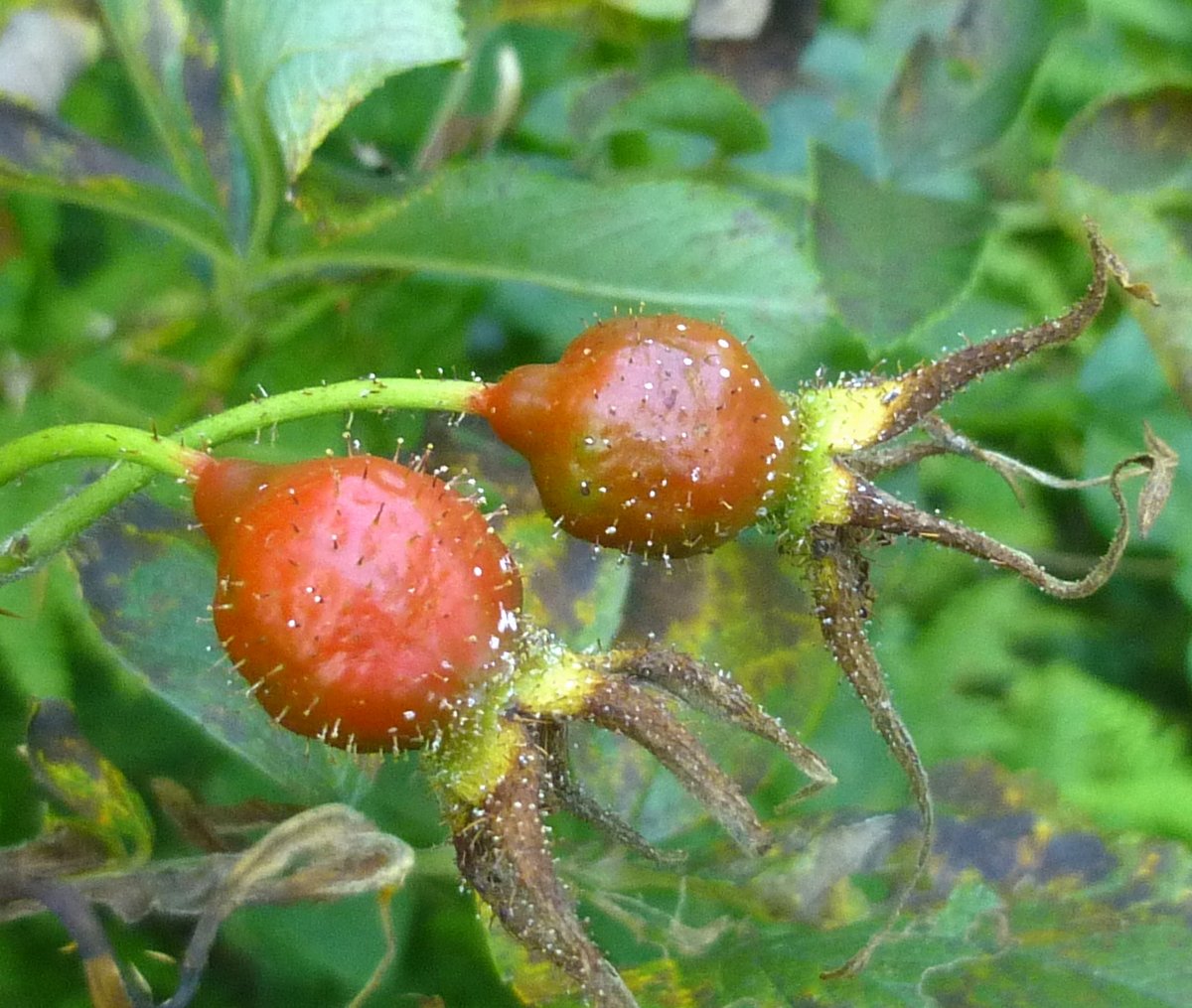











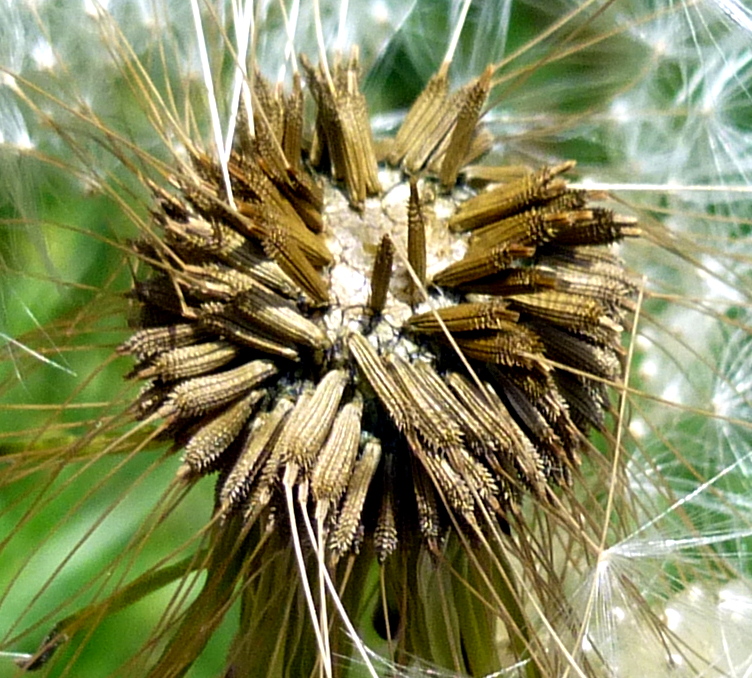

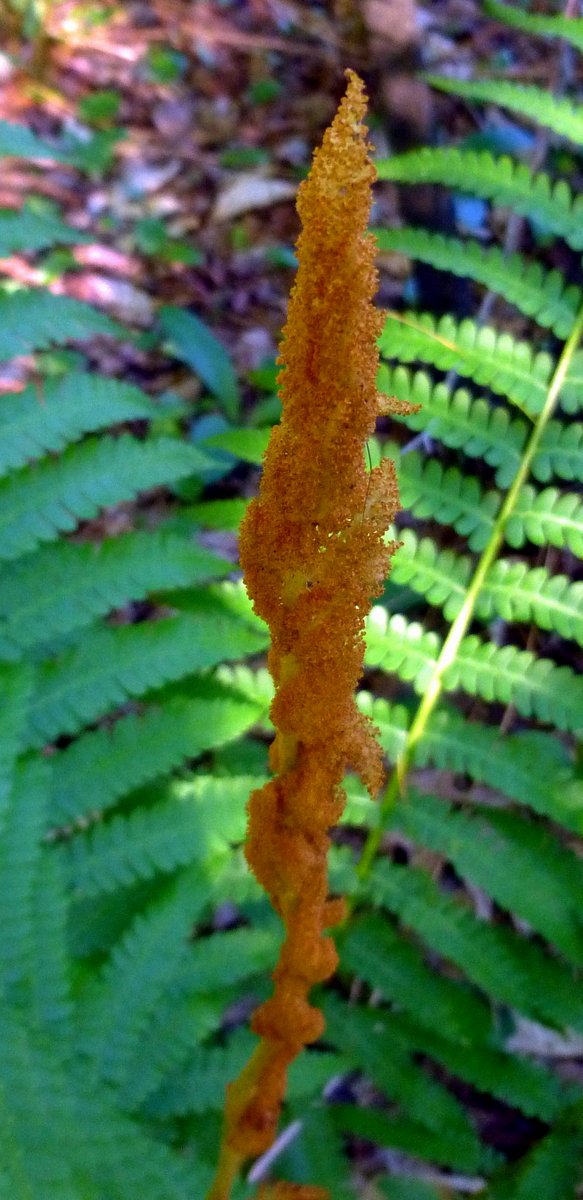




 I think these are hairy stereum bracket fungi, also called hairy curtain crust (Stereum hirsutum.) The common name comes from the way these fungi are covered with fine hairs on their upper surface when young. As they age they lose the hairs and become smooth like other bracket fungi. Colors can vary but the hairs and very wavy edges help with identification. They like to grow on fallen deciduous trees and are one of the false turkey tail fungi. False turkey tail fungi are a polypore, which basically means they have pores instead of gills.
I think these are hairy stereum bracket fungi, also called hairy curtain crust (Stereum hirsutum.) The common name comes from the way these fungi are covered with fine hairs on their upper surface when young. As they age they lose the hairs and become smooth like other bracket fungi. Colors can vary but the hairs and very wavy edges help with identification. They like to grow on fallen deciduous trees and are one of the false turkey tail fungi. False turkey tail fungi are a polypore, which basically means they have pores instead of gills.  This mushroom was growing on a stump and it was quite large. I think it might be a tiger sawgill (Lentinus tigrinus.) Apparently the name refers to the scales on the cap that are supposed to resemble a tiger like pattern. Tigers have stripes and to me the scales look more like spots, so shouldn’t it be a leopard sawgill? The Lentus part of the scientific name means tough or pliant. When this mushroom grows on a living deciduous tree it causes white rot, and that means the tree is finished.
This mushroom was growing on a stump and it was quite large. I think it might be a tiger sawgill (Lentinus tigrinus.) Apparently the name refers to the scales on the cap that are supposed to resemble a tiger like pattern. Tigers have stripes and to me the scales look more like spots, so shouldn’t it be a leopard sawgill? The Lentus part of the scientific name means tough or pliant. When this mushroom grows on a living deciduous tree it causes white rot, and that means the tree is finished.  I think this might be another hairy stereum (Stereum hirsutum) bracket fungus just getting started. It’s interesting to see how it seems to flow out from under the bark almost as if it were liquid rather than solid. I’m not sure what its little friend wanted, but he might have been looking for some lunch.
I think this might be another hairy stereum (Stereum hirsutum) bracket fungus just getting started. It’s interesting to see how it seems to flow out from under the bark almost as if it were liquid rather than solid. I’m not sure what its little friend wanted, but he might have been looking for some lunch.  I think these might be white cheese polypores (Tyromyces chioneus.) This is another bracket fungus that causes white rot. They start life soft, watery, and velvety and then yellow slightly and become hard and smooth. When very old they look shriveled or wrinkled. Their common name comes from their scientific name- Tyromyces means “with a cheesy consistency,” and chioneus means “snow white.” I’m not sure if these had a cheesy consistency, but they were certainly snow white.
I think these might be white cheese polypores (Tyromyces chioneus.) This is another bracket fungus that causes white rot. They start life soft, watery, and velvety and then yellow slightly and become hard and smooth. When very old they look shriveled or wrinkled. Their common name comes from their scientific name- Tyromyces means “with a cheesy consistency,” and chioneus means “snow white.” I’m not sure if these had a cheesy consistency, but they were certainly snow white.  Some bracket fungi have gills on their undersides, some have pores, and some are “toothed” with many tiny spines. True turkey tail fungi (Trametes versicolor) have pores and false turkey tails have a smooth brown surface. That’s the easiest way to tell the two apart. The Stereum ostrea pictured here (I think) is a false turkey tail. These fungi live on hardwood logs and cause white rot. The one pictured here was quite young. Often age and even where the fungus grows will cause variations in size, shape and color in bracket fungi.
Some bracket fungi have gills on their undersides, some have pores, and some are “toothed” with many tiny spines. True turkey tail fungi (Trametes versicolor) have pores and false turkey tails have a smooth brown surface. That’s the easiest way to tell the two apart. The Stereum ostrea pictured here (I think) is a false turkey tail. These fungi live on hardwood logs and cause white rot. The one pictured here was quite young. Often age and even where the fungus grows will cause variations in size, shape and color in bracket fungi.  The thin dark strip before the white edge leads me to believe that this is a Ganoderma applanatum, which is called artist’s fungus, artist’s conk, or artist’s polypore. The art comes in when the white flesh is scratched and the scratches turn a light brown color. I have one that I drew a picture on over 30 years ago. I can’t be positive that’s what it is though because the colors vary so much and I didn’t test this one to see if its flesh was brown / cinnamon colored. This one was quite big-about the size of a dinner plate.
The thin dark strip before the white edge leads me to believe that this is a Ganoderma applanatum, which is called artist’s fungus, artist’s conk, or artist’s polypore. The art comes in when the white flesh is scratched and the scratches turn a light brown color. I have one that I drew a picture on over 30 years ago. I can’t be positive that’s what it is though because the colors vary so much and I didn’t test this one to see if its flesh was brown / cinnamon colored. This one was quite big-about the size of a dinner plate. 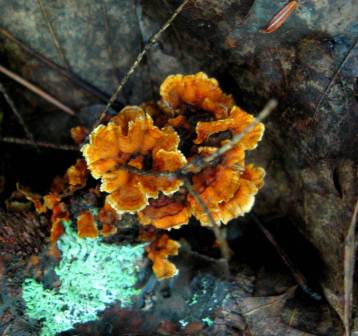 These look orange brown to me. Identifying them has proven much harder than it should be, but I think they might be another example of hairy stereum bracket fungi (Stereum hirsutum.) These fungi have such variable colors and shape that it’s hard to know for sure.
These look orange brown to me. Identifying them has proven much harder than it should be, but I think they might be another example of hairy stereum bracket fungi (Stereum hirsutum.) These fungi have such variable colors and shape that it’s hard to know for sure.  I got a little frustrated at not being able to see the colors of these fungi accurately so I just this minute found a shareware program called “What Color.” You just put the cursor on a color and it tells you what it is. So far, it seems accurate. In these turkey tails (Trametes versicolor) it sees tan, dark khaki, thistle (purple,) plum (darker purple,) light slate gray, olive green, dark sea green, steel blue, light steel blue, rosy brown, and sienna. That seems like an awful lot of colors. I think tan with light purple edges would do.
I got a little frustrated at not being able to see the colors of these fungi accurately so I just this minute found a shareware program called “What Color.” You just put the cursor on a color and it tells you what it is. So far, it seems accurate. In these turkey tails (Trametes versicolor) it sees tan, dark khaki, thistle (purple,) plum (darker purple,) light slate gray, olive green, dark sea green, steel blue, light steel blue, rosy brown, and sienna. That seems like an awful lot of colors. I think tan with light purple edges would do.  This bracket fungus reminds me of those old balloon tires with wide white walls. I think this might be called the red banded polypore (Fomitopsis pinicola.) If it is, the top reddish part of the fungus will become one in several bands of yellows, reds, orange-reds and finally black nearest the tree. Rust red is the band color farthest from the tree. Its white flesh turns yellow when bruised. Red banded polypore is said to grow on over 100 species of trees. Another very similar fungus is the resinous polypore (Ischnoderma resinosum)
This bracket fungus reminds me of those old balloon tires with wide white walls. I think this might be called the red banded polypore (Fomitopsis pinicola.) If it is, the top reddish part of the fungus will become one in several bands of yellows, reds, orange-reds and finally black nearest the tree. Rust red is the band color farthest from the tree. Its white flesh turns yellow when bruised. Red banded polypore is said to grow on over 100 species of trees. Another very similar fungus is the resinous polypore (Ischnoderma resinosum)  These horse hoof shaped fungi are called tinder polypore (Fomes fomentarius)because of their age old use as tinder to start fires. In the middle ages strips of these fungi were used in flintlock rifles. A spark from a flint would ignite the tinder polypore, which in turn would ignite the gunpowder. The Cree tribe of Native Americans also used these fungi to carry coals from one place to another. Tinder polypores produce huge amounts of spores; measurements in the field have shown that they release as many as 800 million spores per hour in the spring and summer! They grow on dead deciduous trees and logs. I found 30 or more marching up a dead maple one day.
These horse hoof shaped fungi are called tinder polypore (Fomes fomentarius)because of their age old use as tinder to start fires. In the middle ages strips of these fungi were used in flintlock rifles. A spark from a flint would ignite the tinder polypore, which in turn would ignite the gunpowder. The Cree tribe of Native Americans also used these fungi to carry coals from one place to another. Tinder polypores produce huge amounts of spores; measurements in the field have shown that they release as many as 800 million spores per hour in the spring and summer! They grow on dead deciduous trees and logs. I found 30 or more marching up a dead maple one day.  The shareware color finding program sees dark salmon pink in these turkey tails, along with greens, browns, and grays. I would have said brown with a white edge. Many of the turkey tails I saw last winter had a lot of purples and blues in them but so far this year they lean more toward browns and tans. I wish I could find information on what causes the colors in bracket fungi-I wonder if cold affects color.
The shareware color finding program sees dark salmon pink in these turkey tails, along with greens, browns, and grays. I would have said brown with a white edge. Many of the turkey tails I saw last winter had a lot of purples and blues in them but so far this year they lean more toward browns and tans. I wish I could find information on what causes the colors in bracket fungi-I wonder if cold affects color.  My color finding software says saddle brown nearest the tree, then 100% gray on the body, and then white on the outer edge. I can agree with that. I can’t find this mushroom in either of my books, which illustrates how sometimes the most common looking mushrooms are the hardest to identify.
My color finding software says saddle brown nearest the tree, then 100% gray on the body, and then white on the outer edge. I can agree with that. I can’t find this mushroom in either of my books, which illustrates how sometimes the most common looking mushrooms are the hardest to identify. 